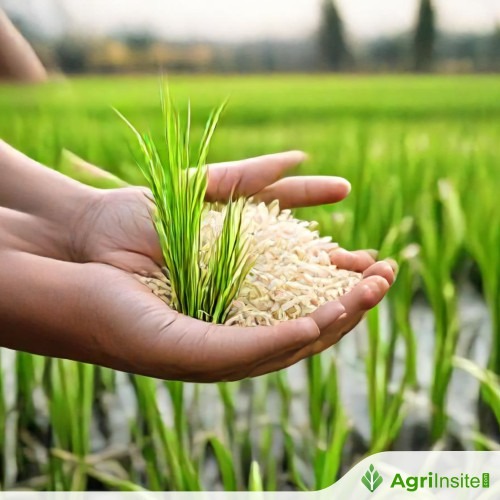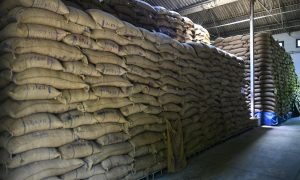New Eco-Friendly, High-Yield Rice Reduces Methane Emissions

Scientists developed a rice strain emitting 70% less methane by breeding high-yield rice with a low-methane variety. The new strain alters root exudates, reducing methane-producing microbes while maintaining high yields. Field trials confirmed its effectiveness, and efforts are underway to register it and promote adoption, with government support crucial for widespread implementation.
Rice cultivation is responsible for around 12% of global methane emissions, and these emissions are expected to increase with global warming and as the human population continues to grow. An international team of scientists has now identified chemical compounds released by rice roots that determine how much methane the plants emit. They used this information to breed a new strain of rice that emits up to 70% less methane.
“This study shows that you can have low methane and still have a rice with high yields,” said Anna Schnürer, PhD, a microbiologist at the Swedish University of Agricultural Sciences. “And you can do it using traditional breeding methods, without GMO, if you know what you’re looking for.”
Rice is the staple food for half the world’s population, the authors wrote. And with global production of food for human consumption adding nearly one degree centigrade to warming by 2100, “… rice cultivation will be the second most important source, contributing 23%.”
The methane emitted by rice paddies is produced by microbes—methanogenic communities—that break down organic compounds released from rice plant roots. Rice and other plants release these compounds, known as “root exudates,” to feed soil microbes, which in turn aid plant growth by releasing nutrients that the plants can absorb. Though it’s been long understood that soil microbes and root exudates are involved in methane emissions, it was unclear which chemical compounds in root exudates were responsible. “… the dominant root secretion governing methane emissions is not yet identified after decades of studies, even though secreted carbohydrates and organic acids have been shown to contribute to methane emissions. In this study, we discovered that fumarate and ethanol are two major rice-orchestrated secretions and play a key role in regulating methane emissions,” the team commented.
The researchers had previously reported on a novel, gene-modified low-methane rice line, SUSIBA2, which generated as much as 90% lower methane emissions. In their newly reported study, to identify which root exudate compounds are converted into methane, the researchers compared root exudates from their engineered SUSIBA2 line, and a control rice line, Nipponbare (Nipp), a non-GMO cultivar with average methane emissions. They found that SUSIBA2 roots produced significantly less fumarate, and noted a correlation between the amount of fumarate secreted and the abundance of methane-releasing archaea— methanogens—in the surrounding soil.
To confirm fumarate’s role, the researchers added fumarate to the soil of rice plants grown in containers, which resulted in increased methane emissions. “… a positive correlation between methane emissions and fumarate was discovered, i.e., the addition of fumarate significantly increased methane emissions in both pots and anaerobic cultures,” the team stated. They also demonstrated that applying oxantel, a chemical that inhibits the enzymatic breakdown of fumarate, effectively reduced methane emissions. “Application of oxantel caused a significant decrease of methane emissions from both Nipp and SUSIBA2 rice, for Nipp corresponding to just 10% of the nontreated control,” they added. However, since the SUSIBA2 plants still produced less methane than the Nipponbare plants, the researchers realized that fumarate isn’t the only piece to the puzzle.
“It was almost like having a riddle,” said Schnürer. “We noticed that the soil itself contained something that reduced methane emissions, so we started thinking that there must be an inhibitor of some kind that is also causing the difference between the varieties.”
When they re-analyzed the root exudates, the team noticed that SUSIBA2 plants also release significantly more ethanol. “Ethanol was discovered to be the main compound differing between exudates from Nipp and SUSIBA2,” they noted. Adding ethanol to the soil surrounding rice plants reduced methane emissions. “Effects of ethanol on methane emissions were further investigated in pot cultivation of both Nipp and SUSIBA2 rice,” the investigators further explained. “Here, addition of ethanol was found to reduce methane emissions by around 85% without affecting root property …”
Next, the team investigated whether they could use traditional breeding methods to produce low methane-emitting rice with high yield. To do this, they crossbred a high yield, elite rice variety with a previously identified low-methane-emitting variety (the Heijing cultivar) whose root exudate was low in fumarate and high in ethanol.
The rice plants from this crossbreeding consistently released root exudates with low fumarate and high ethanol (LFHE) profiles. When the researchers grew these LFHE rice varieties at various field sites throughout China, they showed that the LFHE rice produced 70% less methane on average compared with the elite variety from which it was bred. The LFHE crops also produced relatively high yields—8.96 tons/hectare on average, compared to the 2024 global average of 4.71 tons/hectare.
The researchers also investigated whether ethanol and oxantel could be used to reduce methane emissions at a large scale. Based on a two-year field trial at two different sites in China, this treatment resulted in approximately 60% reduction in methane emissions without impacting crop yield. “By employing the crossing, our results provide a practical basis for reducing methane emissions from rice paddies, which can thus act as a long-term solution to counteract the impact of increasing rice cultivation on global warming,” the scientists concluded. “Thus, these data clearly illustrated the practical application and farm income benefits of our low-methane rice breeding work … Overall, our study provides promising ways to reduce methane emissions from rice paddies, while the reductions observed highlight the importance of rice breeding and cultivation measures in the mitigation of global warming.”
Now, the researchers are working to register the LFHE rice as a variety with the Chinese government and others, meaning that it could be marketed to farmers in the future. They’re also working with fertilizer companies to investigate whether oxantel could be added to commercial fertilizers. “Oxantel, is not harmful to humans, and is already used as an anthelmintic in human and animal treatment for intestinal worms, and it can easily be utilized in rice paddies as fertilizer additives,” they wrote, noting that further studies would first be needed to investigate the effects of adding oxantel on soil health and the environment.
“To make these things happen, we’ll also need some encouragement from governments to motivate and support farmers to use these low-methane varieties,” said Schnürer. “It’s one thing to breed eco-friendly rice varieties, but then it’s critical to get them on the market and to get the farmers to accept them.”
To read more about Rice News continue reading Agriinsite.com
Source : Geneng News















